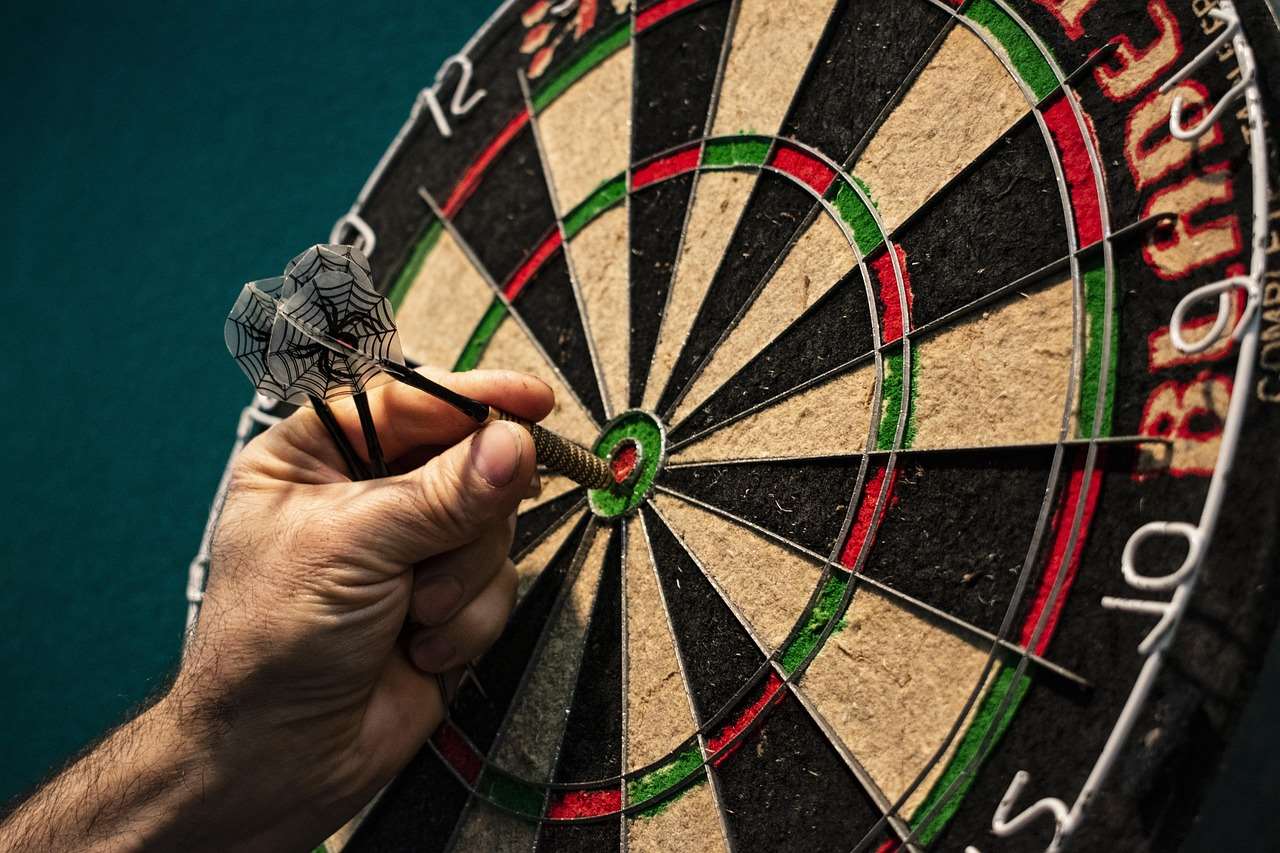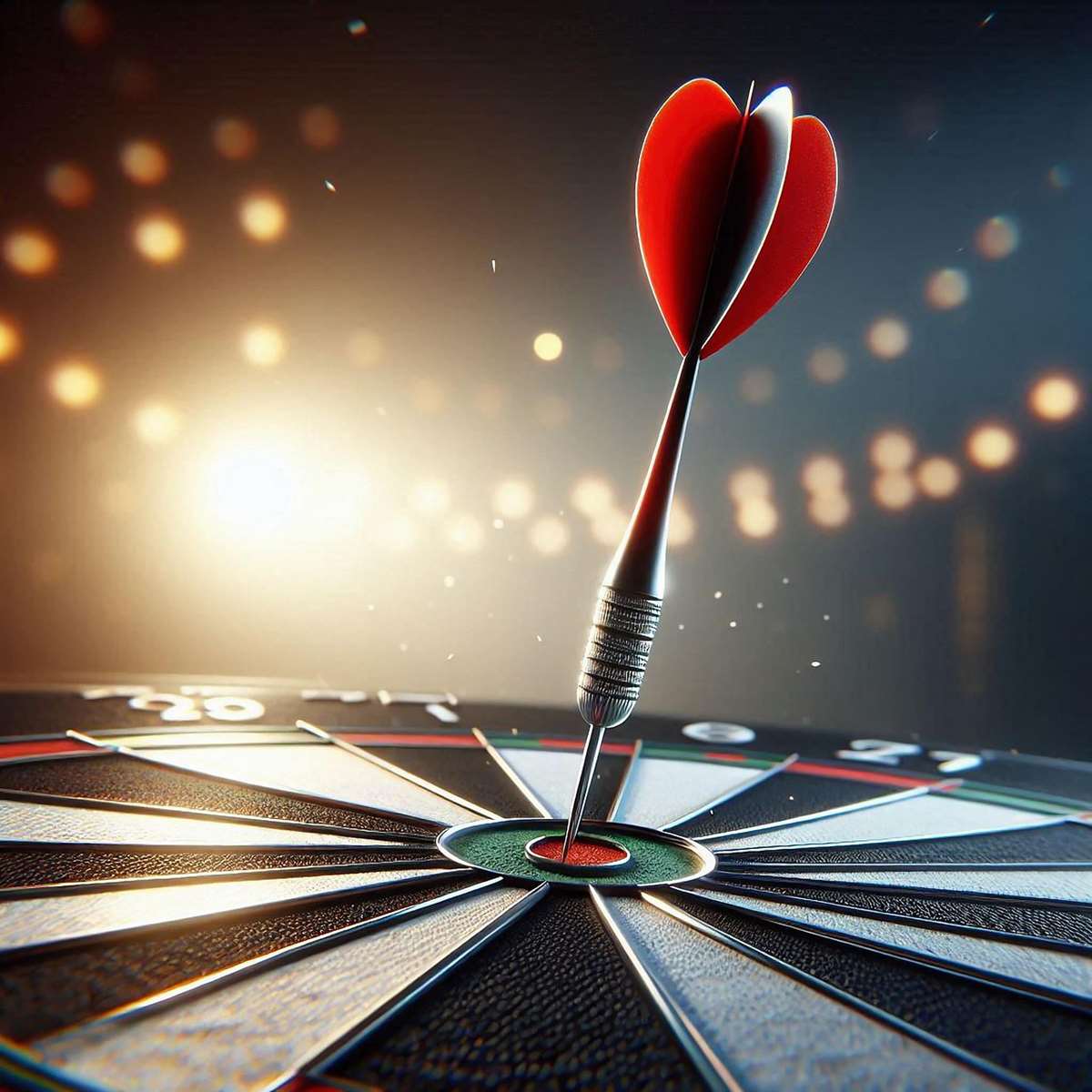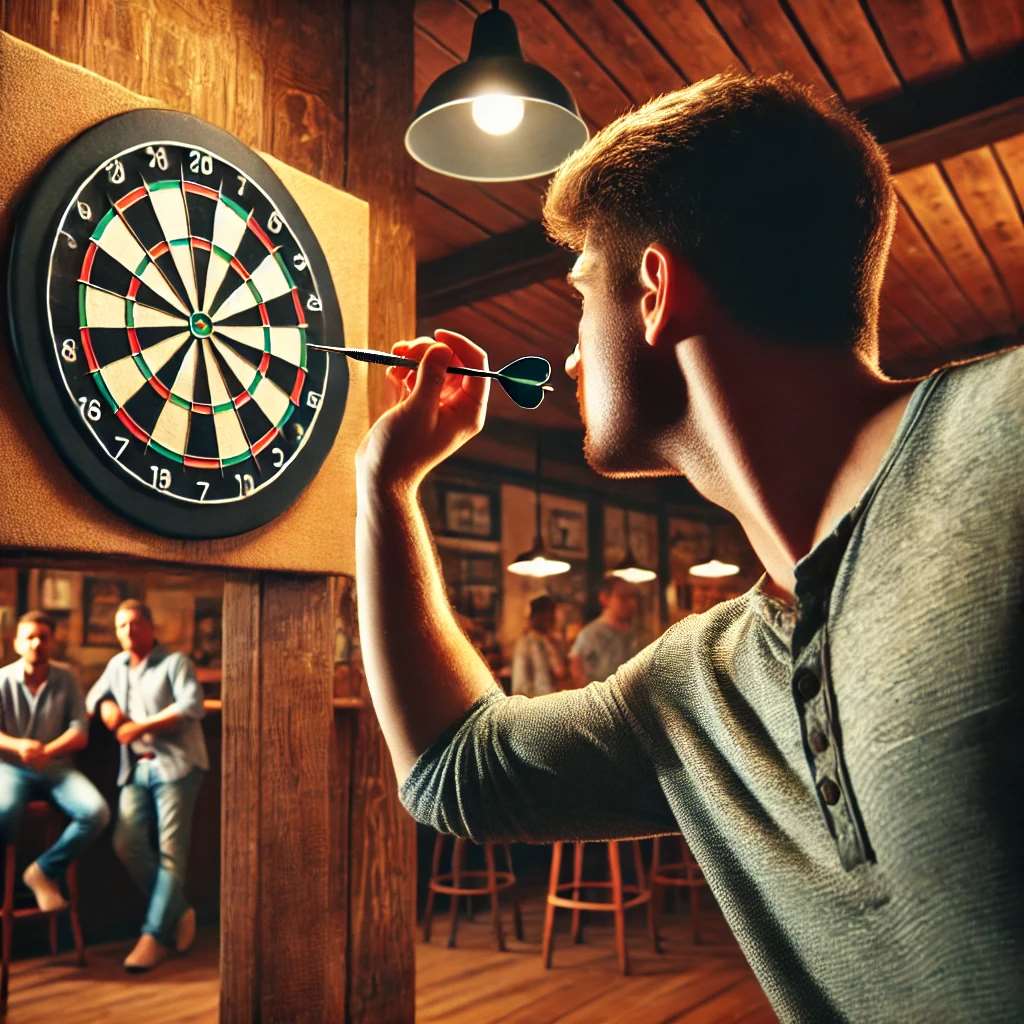Understanding a darts score chart is fundamental to enjoying and excelling in the game. This article will demystify the chart, explaining how it works and how to use it effectively. You’ll also learn about different scoring variations, helpful tips for tracking scores, and strategies to improve your overall darts game.
⚠️ Still Using Pen & Paper (or a Chalkboard)?! ⚠️
Step into the future! The Dart Counter App handles all the scoring, suggests checkouts, and tracks your stats automatically. It's easier than you think!
Try the Smart Dart Counter App FREE!Ready for an upgrade? Click above!
Understanding the Basic Darts Score Chart
The standard darts score chart is based on a circular dartboard divided into 20 numbered sections, ranging from 1 to 20. Each section is further divided by wires into segments that affect scoring. Understanding these sections is crucial for accurately interpreting the darts score chart and maximizing your point potential.

Key Components of the Dartboard and Their Scoring Implications
- Numbered Sections (1-20): These are the primary scoring areas. A dart landing within one of these sections scores the corresponding number.
- Double Ring (Outer Ring): A dart landing in the double ring scores twice the value of the corresponding number. Hitting double 20 is a score of 40.
- Treble Ring (Inner Ring): Landing a dart in the treble ring triples the value of the corresponding number. Hitting treble 20 yields a score of 60.
- Bullseye (Center Circle): The outer bullseye (green section) scores 25 points.
- Double Bullseye (Inner Bullseye/Red Section): The inner bullseye, often referred to as the “double bull” or “bull,” scores 50 points and is crucial for finishing games.
Mastering the different scoring areas and their respective values on the darts score chart is essential for strategic gameplay. Knowing where to aim for specific scores will dramatically improve your performance. Remember practice is vital.
Different Scoring Variations in Darts
While the core scoring system remains consistent, different game variations employ slightly different rules or objectives, thus impacting how the darts score chart is utilized and interpreted. Let’s explore some popular variations:
301 and 501
These are the most common variations. Players start with 301 or 501 points and must reduce their score to exactly zero. The game must be finished with a double or the bullseye. This introduces a layer of strategy as players must plan their shots to leave themselves a reachable double. Check out our article on how to hit the bullseye every time.
Cricket
Cricket is a strategic game focusing on specific numbers (20, 19, 18, 17, 16, 15, and the bullseye). Players must “open” these numbers by hitting them three times. Once a number is opened, only that player can score on it until the other player closes it by also hitting it three times. The goal is to close all numbers and have a higher score. This is a totally different type of darts score chart challenge.
Around the Clock
In this game, players must hit each number on the board in sequence from 1 to 20. The first player to successfully hit all the numbers wins. This is a simple but effective way to improve accuracy and familiarize yourself with the entire darts score chart. It’s also a great warm-up exercise.

Creating and Using Your Own Darts Score Chart
While pre-made darts score chart templates are readily available (including darts scoreboard excel sheets), creating your own can be a useful way to customize it to your specific needs and preferences. Here’s how:
Designing a Custom Darts Score Chart
- Choose your format: Will it be a physical chart on paper, a spreadsheet, or a digital app?
- Include essential information: Player names, starting score (e.g., 301, 501), remaining score after each turn, and running totals.
- Add customization: Consider including spaces for noting the number of darts thrown per leg, averages, and highest scores.
Tips for Effective Scorekeeping
- Be accurate: Double-check your calculations to avoid errors.
- Be consistent: Use a consistent method for recording scores.
- Be clear: Write legibly so everyone can read the chart.
Consider using an automatic dart scoring app, which is an easy and efficient way to keep scores. Check out Automatic dart scoring app. This ensures greater accuracy and eliminates manual calculations.
Advanced Strategies for Using the Darts Score Chart
Beyond simply tracking scores, the darts score chart can be a valuable tool for developing advanced strategies and improving your overall game. It helps with planning your shots, calculating outs, and analyzing your performance.
Calculating Outs and Planning Your Shots
Knowing common out-shots is critical for competitive play. Use the darts score chart to practice calculating the best combinations to reach zero, finishing on a double. For instance, if you have 40 remaining, aim for double 20. If you have 32, go for double 16. Familiarize yourself with the most efficient routes to the finish.
Analyzing Your Performance and Identifying Weaknesses
Track your performance on the darts score chart over time. Note your averages, high scores, and areas where you consistently struggle. This data can help you identify weaknesses in your game and focus your practice efforts accordingly. Are you struggling with doubles? Are your treble hits inconsistent? The darts score chart reveals these patterns.

Common Mistakes to Avoid When Using a Darts Score Chart
Even with a clear understanding of the darts score chart, it’s easy to fall into common pitfalls that can hinder your progress and accuracy. Recognizing these mistakes can help you prevent them and improve your game.
Miscalculating Scores
One of the most frequent errors is miscalculating the score after each throw. Ensure you correctly add or subtract the score from your remaining total. Double-check your math, especially when fatigue sets in. Always pay attention to whether you’re subtracting from 301, 501, or another starting score.
Incorrectly Reading the Dartboard
It’s crucial to accurately identify where your dart lands on the board. Mistaking a double for a single, or vice versa, can significantly impact your score and strategy. Pay close attention to the rings and the numbered sections. Proper lighting can also prevent misreading the board.
Failing to Track Stats and Analyze Performance
The darts score chart isn’t just for tracking the immediate game; it’s a tool for long-term improvement. Neglecting to track stats like averages, doubles percentage, and the number of darts per leg means missing valuable insights into your strengths and weaknesses. Consistently recording and analyzing this data is crucial for targeted practice and progress.

Choosing the Right Darts Equipment for Improved Scoring
While mastering the darts score chart and practicing regularly are essential, having the right equipment can also significantly enhance your scoring ability. Consider these factors when selecting your darts and board:
Dart Weight and Grip
Experiment with different dart weights to find what feels most comfortable and controllable for you. The grip is equally important; some players prefer smooth barrels, while others prefer knurled or textured grips for added stability. Visit your local darts shop to test different options.
Dart Shafts and Flights
Shaft length and flight shape affect the dart’s trajectory and stability in the air. Shorter shafts generally result in a straighter flight, while longer shafts can provide more stability. Experiment with different combinations to find what works best for your throwing style.
Looking for a short dart shaft? Then dart shaft kurz is what you want.
Dartboard Quality and Material
Invest in a high-quality dartboard made of sisal fibers. Sisal boards are self-healing, meaning the holes close up after the darts are removed, extending the board’s lifespan. Rotating your dartboard regularly will also ensure even wear and tear.

Practice Drills to Improve Your Darts Score
Consistent practice is key to mastering the darts score chart and achieving consistent scores. Here are a few drills that can help you improve your accuracy and overall game.
Around the World
Start by aiming for the number 1 and then progressively move around the board to 2, 3, 4, and so on. This drill improves your accuracy across the entire board. Try hitting each number three times before moving on to the next.
Double Practice
Focus specifically on hitting doubles. Start with double 1 and work your way up to double 20, aiming for each double multiple times before moving on. This drill is crucial for improving your finishing ability.
Treble Twenty Practice
The treble twenty is the highest-scoring single area on the board. Dedicate time to consistently hitting treble 20. This drill can significantly boost your overall score and averages.
Remember, consistent practice, combined with a solid understanding of the darts score chart, will lead to noticeable improvements in your game. So, grab your darts, step up to the oche, and start practicing!
Organizing a Darts Tournament
Organizing a darts tournament can be a fun and engaging experience, whether it’s a casual event among friends or a more competitive league. Understanding the darts score chart and ensuring fair play is essential for a successful tournament.
Tournament Formats
Decide on the tournament format. Common formats include single elimination, double elimination, and round-robin. Single elimination is simple but unforgiving, while double elimination gives players a second chance. Round-robin ensures that everyone plays each other, which is good for smaller groups.
Match Rules
Clearly define the rules of the matches, including the starting score (301, 501), the number of legs or sets played, and the finishing rules (double-out). Ensure all participants understand the rules before the tournament begins. Using an electronic darts score chart or app can help ensure accurate scorekeeping during the tournament.
Prizes and Awards
Offer prizes or awards to the winners and runners-up to add excitement and motivation. Prizes can range from trophies and medals to gift certificates and dart equipment. A well-organized tournament with fair rules and appealing prizes can create a memorable experience for all participants.
Conclusion
Understanding and effectively utilizing a darts score chart is paramount to both enjoying and improving your darts game. From grasping the basic scoring zones to employing advanced strategies for calculating outs and analyzing performance, the darts score chart serves as an indispensable tool. Remember to avoid common pitfalls like miscalculations and neglecting statistical tracking. By incorporating the right equipment, practicing consistently, and understanding how to apply the darts score chart to different game variations, you’ll be well on your way to hitting more 180s and dominating the oche. Now, take what you’ve learned, put it into practice, and start tracking your progress on your very own darts score chart! Consider joining a local darts league, or even planning a small friendly tournament, to test your skills and share your love for the game! For additional information on other dart games, why not read our article on darts doubles?
Hi, I’m Dieter, and I created Dartcounter (Dartcounterapp.com). My motivation wasn’t being a darts expert – quite the opposite! When I first started playing, I loved the game but found keeping accurate scores and tracking stats difficult and distracting.
I figured I couldn’t be the only one struggling with this. So, I decided to build a solution: an easy-to-use application that everyone, no matter their experience level, could use to manage scoring effortlessly.
My goal for Dartcounter was simple: let the app handle the numbers – the scoring, the averages, the stats, even checkout suggestions – so players could focus purely on their throw and enjoying the game. It began as a way to solve my own beginner’s problem, and I’m thrilled it has grown into a helpful tool for the wider darts community.